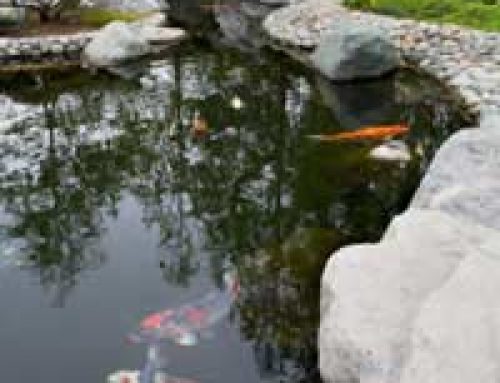 Mention the words pond safety and immediately children spring to mind, but when it comes to pets, we can sometimes forget that an inquisitive puppy or kitten is every bit as curious as a toddler – and just as easily drowned.
Mention the words pond safety and immediately children spring to mind, but when it comes to pets, we can sometimes forget that an inquisitive puppy or kitten is every bit as curious as a toddler – and just as easily drowned.
It is not only cats and dogs that can get into trouble – free-ranging rabbits, guinea pigs and their like may be just as much at risk. If you have pets of any kind – young or old – and they ever have access to the pond, it is only sensible to give a bit of consideration to their well-being around it and often, as with so many avoidable accidents, a small amount of thought can be all that is needed to avert tragedy.
The Pond Itself
If the pond is being newly constructed, then some helpful features can be incorporated into the design from the outset. One of the most sensible precautions is to ensure that somewhere around the sides, there is a good escape route in the event that your pet does fall in. Not only will this stop your liner being damaged by frantically scrabbling claws, but it will benefit wildlife too, particularly young frogs when they emerge, not to mention being a literal lifesaver to any hedgehogs or small wild mammals which may blunder in by accident.
Some cat-owning pond-keepers construct their ponds so that the water level is lower below the surrounding ground than their pet can comfortably reach, which of course removes some of the obvious temptation, especially if it is stocked with fish. However, it does make things considerably more difficult for a cat to get out again if it should happen to fall in – so it is not without serious drawbacks as an approach. Other people suggest using wobbly rocks around the pond edge, which cats in particular are said to find unsettling – so they stay away from the danger. While it may well work, there is also the very real possibility that the rocks become dislodged and end up in the water – with or without the cat alongside – so this is another idea that is not without its problems. Raised ponds are one alternative solution worth considering – especially if they have narrow supporting walls which will keep out small pets and not provide a suitable perching place for larger ones. This type of pond can be rigidly formal or successfully softened by imaginative planting and landscaping to fit into any type of garden.
If the pond is a pre-existing one, it may not be quite so easy but it should still be possible to make it safe for pets. Sometimes the solution depends on the animals in question – fences and walls around the pond may be effective for small pets and well-trained dogs, for instance, but they are not so good for cats. Perhaps the most straightforward all-round solution is to fit a net or rigid mesh frame over the pond, with the added benefits of stopping leaves blowing into it, protecting your fish against herons and, if strong enough, providing excellent child safety too. They can look a little unsightly, depending on the type of pond, but there are times when you just have to compromise.
Away From the Water
If the pond has pumps or lighting, it is essential that the supply cables are protected not just against your own stray spade blade, but against a concerted effort to bite or gnaw through them and bear in mind that some animals show an almost suicidal dedication to doing this. Properly buried cables protected in a suitable soil pipe should be perfectly fine – unless Fido is a world-class digger too – but it is important not to forget even a few inches where wires emerge unprotected and the use of adequate RCDs or circuit breakers is a must.
Pond treatments are also sometimes overlooked with regard to pets; many of the chemicals commonly used to treat fish illnesses in ponds are highly toxic to most living things – making care in their use and adequate storage essential. A few simple precautions are usually all that is needed to keeping your pet safe and most of them are obvious. Read the instructions carefully, follow them slavishly and store pond treatments well away from your pets, in a sealed, spill-proof container, if they do not come in one.
Keeping pets safe around ponds is largely a question of common sense – most of the dangers are there to be seen, the trick is to learn to look for them. Most accidents, human or animal, are avoidable – and being aware of potential hazards should give you all the help you need to make sure you steer clear of them.
Last Modified: January 25, 2022





very intresting great help 4 homework :)